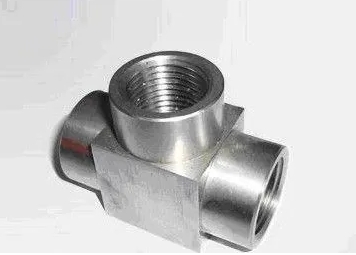
The thread connection is widely used in various metal structures and mechanisms due to its simple design, easy disassembly and assembly, standardization, mass production capabilities, low cost, reliable connection, sufficient strength, rigidity, and self-locking properties. It primarily includes the basic parameters of threads, the main types of thread connections, the strength classes of thread fasteners, the pre-tightening and anti-loosening of thread connections, factors to consider in the design of bolt groups, the stress conditions of bolt groups, and measures to enhance the strength of bolt connections.
- 1. Thread and Thread Connection Main Parameters: The external surface of the thread is a cylindrical helix. The thread is composed of external and internal threads, and according to the shape of the parent body, the threads are classified into cylindrical threads and conical threads. The main parameters of the thread include pitch, helix angle, major diameter, minor diameter, mean diameter, pitch, lead, helix pitch, helix rise angle, and others.
- 2. Main Types of Thread Connections, Standard Connection Components: The main types of thread connections include bolt connections, screw connections, double-threaded bolt connections, and set screw connections. Standard connection components mainly include bolts, double-threaded bolts, screws, set screws, nuts, and washers.
- 3. Strength Classes of Thread Fasteners: National standards stipulate that thread fasteners shall be graded according to their material mechanical properties, with the strength class represented by a number.
- 4. Pre-Tightening and Anti-Loosening of Thread Connections: Pre-tightening increases the stiffness of the connection, tightness, and anti-loosening capability. Anti-loosening devices can be categorized into those that utilize friction, the shape of the connection components, and additional materials.
- 5. Factors to Consider in the Design of Bolt Groups: This includes the geometry of the connection joints, the arrangement of bolts, reasonable bolt stress, and ensuring the same pre-tightening force for each bolt during assembly.
- 6. Stress Conditions of Bolt Groups: This includes the stress conditions of bolt groups under lateral loads, rotational torques, axial loads, and torsional moments.
- 7. Measures to Enhance the Strength of Bolt Connections: This includes improving the load distribution on thread teeth, reducing the stress amplitude of bolts, avoiding additional stresses, and adopting reasonable manufacturing processes.
In summary, thread connections are widely used in various metal structures and mechanisms due to their reliability, strength, and stability, and the design should consider multiple factors to ensure the connection's integrity.





 Customer service 1
Customer service 1  Customer service 2
Customer service 2